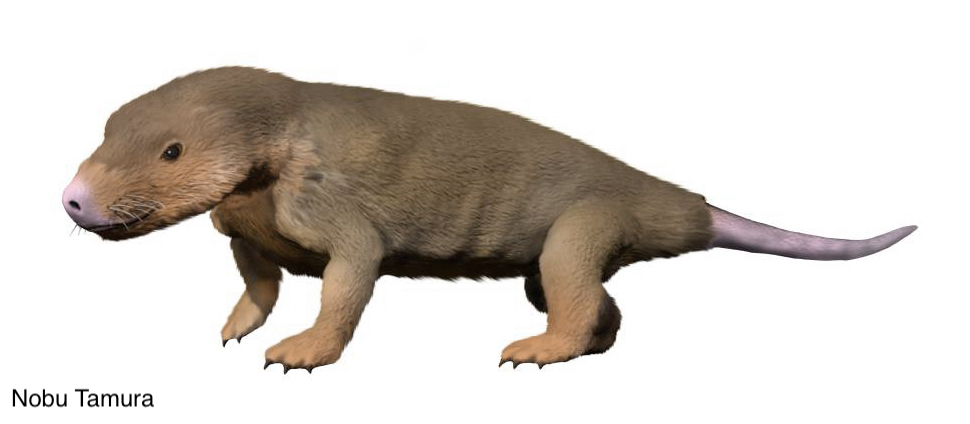Welcome to Abdalodon

Name Definition
Abdala’s tooth
Name Given By
Kammerer, 2016
Location
Karoo Basin of South Africa
Classification
Therapsida, Cynodontia, Charassognathidae, Abdalodontinae
Size
The skull is roughly 6 centimeters long (2.3 inches) but the body length is unknown
Temporal Range
Wuchiapingian age of the Lopingian epoch (late Permian period), approximately 259 - 254 million years ago
Ecological niche
Small insectivore/carnivore
Species/Sub Species
A. diastematicus
Diet
Abdalodon, like many other early cynodonts, would have been a carnivore and probably preyed on animals only smaller than itself
Introduction
Abdalodon is a genus of charassognathid cynodonts that lived in South Africa during the late Permian. Abdalodon, along with another genus Charassognathus, formed the family Charassognathidae, which represents the earliest cynodonts, and is the first known group of Permian cynodonts. Abdalodon was named after Fernando Abdala who has made great contributions to help our understanding of the evolution of early cynodonts. The genus is represented by only one crushed skull found in the Karoo Basin of South Africa. Due to the cynodonts only starting to appear, they were among the rarest of all Permian therapsids (the group that carries many of modern day mammals’ ancestors). The fossil record of Permian cynodonts is represented by a ghost lineage (a lineage where a certain ancestor of that lineage has left no fossil evidence but scientists still infer it to exist through evolutionary gaps in the fossil record). The discovery of Abdalodon was important in recognizing the evolution of the Permian cynodonts. Charassognathus was similar to Abdalodon anatomically. The skull of Abdalodon was slightly longer than Charassognathus, and both were small bodied animals. The sizes of these early cynodonts would explain why they were so rare among all the Permian therapsids since smaller animals are less likely to fossilize.
While there is only a skull that represents the genus, scientists have made a restoration of Abdalodon based on other cynodonts like Thrinaxodon which is basically covered in small fur and sprawling in an upright posture, similar to modern day crocodiles. Another trait of cynodonts that is common is burrowing. There is no direct evidence of Abdalodon burrowing, but other cynodonts from the Karoo Basin including Thrinaxodon are known to be burrowers. This probably means that burrowing has been a trait in the long history of the cynodont lineage. The dentition of Abdalodon also doesn’t seem to show any adaptations in processing large amounts of plants, so Abdalodon may have been carnivorous or insectivorous like many other early cynodonts. Cynodonts would only start to alter their diet during the middle Triassic where some became omnivorous and others completely herbivorous, while some still maintained carnivory.
Sources:
- http://www.prehistoric-wildlife.com/species/a/abdalodon.html
- https://en.wikipedia.org/wiki/Abdalodon